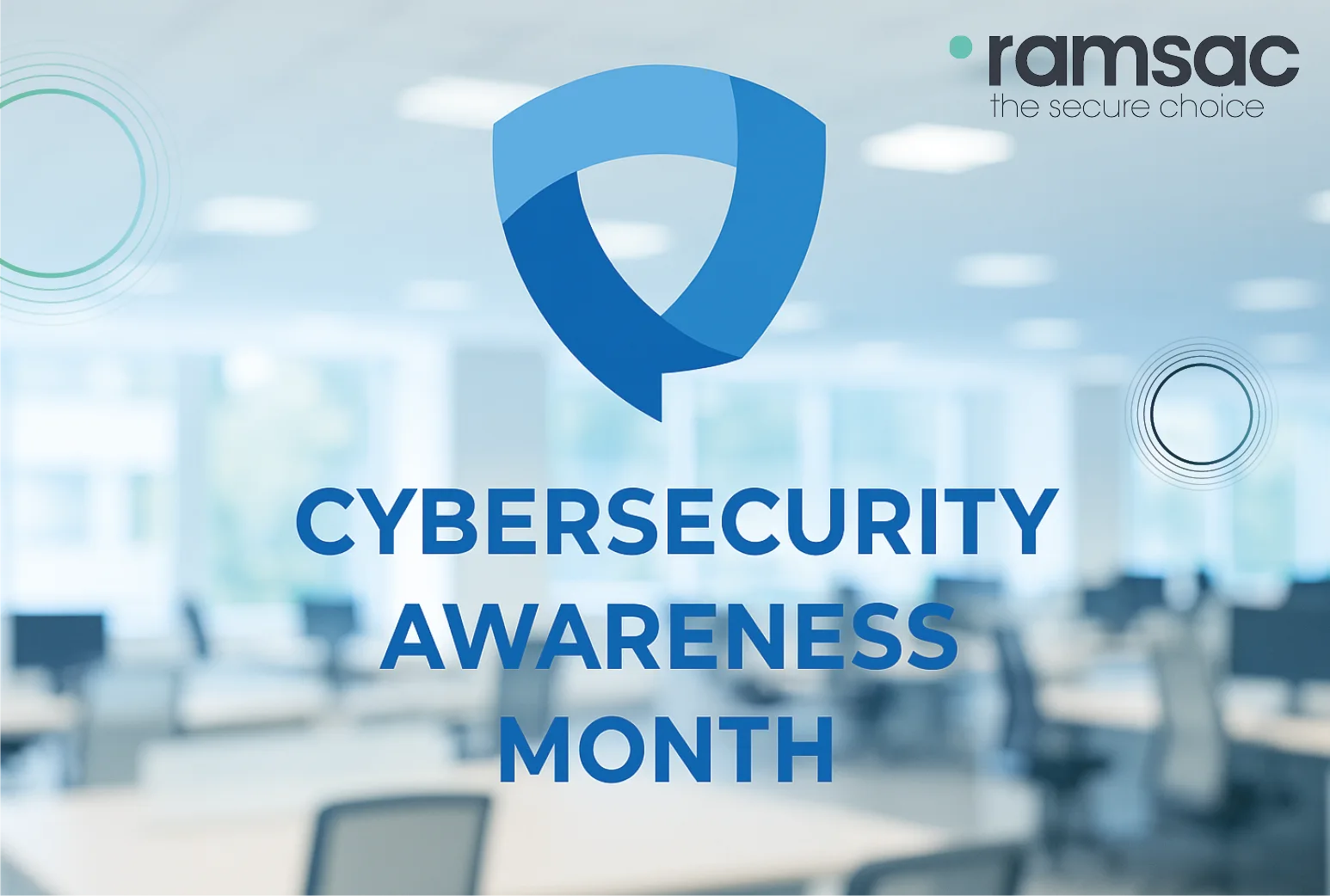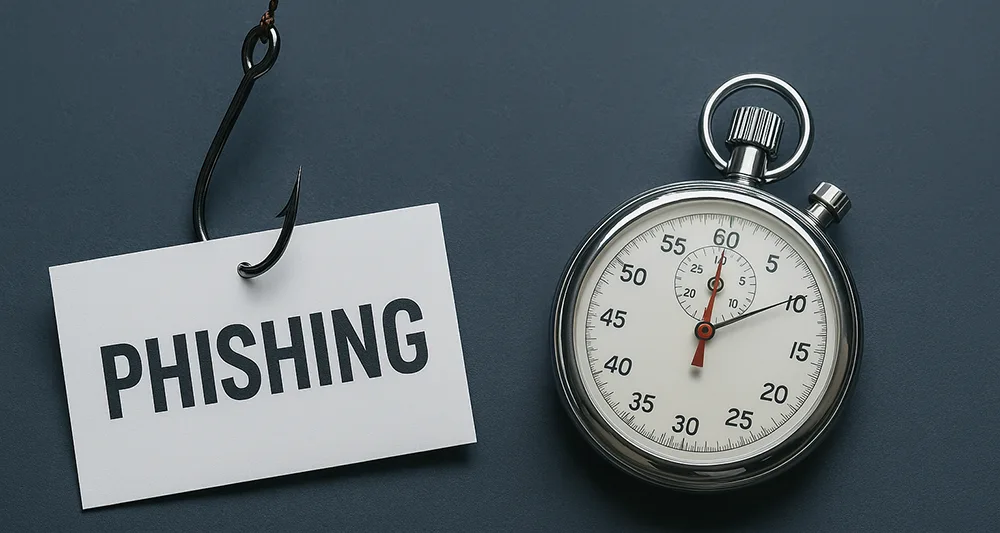11 ways to stop cyber attacks in 2025

Posted on August 28, 2025 by Louise Howland
No business is immune to the threat of a cyber attack. From startups to global organisations, proactive cybersecurity is essential for protecting data and keeping your company infrastructure safe.
Yet cyber criminals are rapidly evolving, with AI-enabled attacks becoming faster, increasingly sophisticated and more convincing. As a result, 2025 is shaping up to be a challenging year for IT security, no matter what sector you work in.
If you’re an established business or a brand-new company, this blog will show you how to prevent cyber attacks in 11 easy steps to ensure you stay ahead of the curve.
What is a cyber attack?
A cyber attack is a targeted assault on your IT system and network. It often involves using malicious code designed to steal, leak or hold your data to ransom, causing severe damage to business operations.
We’ve all heard about the damage a cyber attack can cause to large corporations and enterprises. In early 2025, retail giant Marks & Spencer suffered a major breach when vast quantities of private data belonging to customers and staff were stolen. The attack led to months of disruption, cost the business an estimated £300m in lost profits and did untold harm to the company’s reputation.
Cyber criminals gained access by deploying malicious ransomware that scrambled the company’s IT network and made them unusable until a ransom was paid. Cyber attacks and data breaches typically involve:[AS1]
| Identity theft | Denial of service |
| Fraud/extortion | Unauthorised access |
| Ransomware/malware | Phishing scams/spamming |
| Spyware | System infiltration |
| Supply chain attacks | Social engineering |
| Man-in-the-middle attacks | Password cracking |

How to prevent cyber attacks: A step-by-step guide
Every organisation can take practical steps to build strong defences and reduce the risk and impact of a cyber attack.
Businesses can no longer afford to be reactive and must take a proactive approach to build genuine resilience through smart, AI-powered strategies like 24/7 cybersecurity monitoring.
So, how do you stay ahead of criminals and prevent cyber attacks in today’s fast-moving digital landscape? Here are 11 top tips to protect your business and data.
1. Adopt a Zero Trust Model
Zero Trust assumes that no user or device should be trusted by default, even if they’re inside your network. Every access request must be verified and authenticated. From CRM logins to admin-level approvals, trust nothing, verify everything. It’s a mindset that prevents lateral movement within your systems if one area is breached.
2. Enforce multi-factor authentication (MFA) – and embrace passkeys
Passwords, once the main line of defence, have long shown their weaknesses – reused, stolen, guessed. Multi-factor authentication adds vital extra layers of protection by requiring more than just a password: typically a combination of something the user knows, has or is.
But now, passkeys are taking centre stage as a more secure and user-friendly alternative to traditional passwords altogether. Passkeys rely on biometric data (like Face ID or fingerprint scans) and are cryptographically linked to the device, meaning there’s no password to steal or phish in the first place.
Adopted by Apple, Google, and Microsoft, passkeys are already proving a game-changer in reducing phishing and credential theft. For businesses, introducing passkeys means stronger security with a better user experience, especially in hybrid or remote working environments.
3. Train and educate your workforce
Most cyber-attacks begin with human error. Whether it’s a worker clicking a malicious link, opening a fake invoice, or giving away sensitive information by accident – these incidents occur more regularly than you may think.
Regular cyber awareness training helps your team identify the telltale signs of a cyber attack before it’s too late. From spotting phishing emails and reporting incidents to password best practices and safe browsing habits, cyber awareness training should be part of every company’s security strategy.
4. Ensure systems and software are up-to-date
One of the most common weak points in a company’s defences is outdated software. It’s the first vulnerability cyber criminals often look to exploit to gain access to company systems.
Businesses can strengthen their defences by ensuring software patching becomes a regular habit, or the process is automated. This simple solution is one of the easiest and effective ways to combat the threat of criminals gaining unauthorised access or causing harm.
5. Leverage endpoint detection and response (EDR)
When it comes to cyber defences, traditional antivirus software can fall short in the face of highly-motivated cyber criminals with their modern, sophisticated threats.
Endpoint detection and response tools offer a more reliable and robust approach by helping businesses quickly spot and deal with suspicious activity on devices like laptops or desktops. This enables companies to catch threats that traditional antivirus software might miss before it turns into a full-blown data breach.

6. Always encrypt data
Data encryption has a key role to play in protecting data and sensitive information within a business. When data is encrypted, it becomes unreadable code that only someone with the right security key can unlock. Therefore, even when files or data are stolen or intercepted, they can’t be understood or used without verified access.
Businesses should always make data encryption part of their everyday process for protecting emails, financial documents, customer records, bank details and more. It demonstrates to clients and regulators that your business takes data protection seriously and has stringent security processes in place.
7. Secure your cloud set-up
If you’re planning to move your business tools and files to the cloud, you’d be forgiven for assuming everything is safe. But that’s not always the case, especially when the setup isn’t done carefully and the door is left open for cyber criminals to access.
Secure cloud migration involves a series of simple steps, like strong password choices and limited file access that slam the door in the face of malicious actors looking to gain unauthorised entry. That way, you’ll ensure your business operations run smoothly while gaining the trust of your customers and clients.
8. Use penetration testing on your cyber defences
Want to know if your cyber security strategy actually works under pressure? The best way to find out is to try and break into it as though you were a cyber criminal looking to exploit security gaps and gain unauthorised access.
Penetration testing allows you to uncover weak spot in your security before real attackers find them. By simulating real-life attacks, companies gain a clear picture of any vulnerabilities within their systems so they can fix issues proactively. Not only does this reduce the risk of data breaches and expensive downtime, but it also shows a commitment to strong cyber security practices.
9. Adopt the principle of least privilege
The more people with access to your data, the more opportunities there are for things to go wrong. With least privilege access, user access is limited only to what they require to do their jobs, reducing the risk of accidental or intentional misuse.
Restricting permissions across your organisation prevents attackers from moving freely within your system in the event of one account becoming compromised. This minimises the impact of cyber threats, keeps data safe and makes it easier for teams to monitor and manage their security.
10. Create a disaster recovery plan
If something goes wrong and your business is affected by a cyber attack, hardware failure, or human error, a disaster recovery plan can make all the difference. It provides a clear pathway for retrieving important files, restoring data, and maintaining operations with minimum downtime.
Businesses that fail to create a disaster recovery plan face the prospect of lost time, reduced revenue and loss of reputation. Disaster recovery plans provide a vital safety net should the worst happen by containing the damage and recovering faster.
11. Find a reliable cybersecurity partner
In 2025, cyber criminals are smarter and more persistent than ever before. Having an expert team of cybersecurity specialists on your side is the first line of defence when it comes to protecting your business and digital assets.
Cybersecurity is about more than setting up firewalls and training staff – it’s about finding a reliable partner that understands your business and evolving risks, while offering practical advice when you need it. This helps businesses stay ahead of the curve, remain compliant, and recover quickly if something goes wrong.
Wondering how to prevent cyber-attacks at your business?
Cyber threats are no longer just an IT issue, they are a strategic business risk. At ramsac, we’re proud to support organisations across the UK with practical, proactive cybersecurity services tailored to your unique challenges.
If you’re unsure about the strength of your current defences or simply want a second opinion, we’re here to help. Reach out to our team for a confidential consultation and ensure your business is protected, compliant and future-ready.
ramsac provide a wide range of cybersecurity support and solutions that give you the protection you need. Contact us today and let’s make sure your business is not only protected but fully prepared for what’s next.







